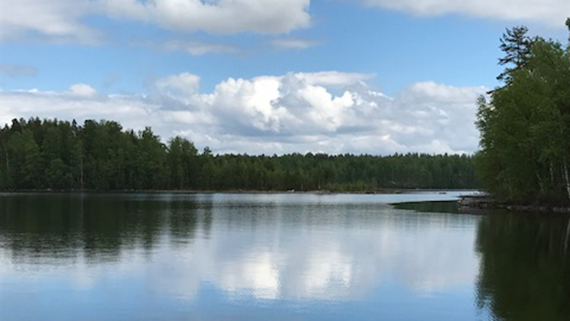Considerable weather fluctuations in July

In July, the average temperature varied from about 12 degrees Celsius in the north of Finnish Lapland to about 17 degrees in the south and south-west of the country. The average temperature of the month was below the long-term average in nearly all parts of the country. The lowest average temperatures were recorded in eastern Finland, where the monthly average temperature was at most around 2–3 degrees below the long-term average, and in northern Finland, where the average temperature remained 1–2 degrees below the long-term average. Deviations in the southern and western parts of the country were smaller, and in many places the temperature was very close to the long-term average.
In July, the temperature varied greatly. In the beginning of the month, weather was quite cold and with the exception of the first day of July the temperature remained clearly below the 25-degree limit past the middle of the month. The lowest temperature in July, -1.7 degrees, was measured at Ylivieska airport on the night before 5 July. There were many cold nights with the temperature below zero in July. The greatest number of these cold nights was seven, reported at the observation station in Möksy, Alajärvi. A greater number of cold nights was reported from the same station in 1975 when the temperature dipped below freezing on nine nights.
After mid-July the weather became gradually warmer, and during the last weekend of the month the temperature was even exceptionally high. Station-specific warm temperature records were broken first in Ylitornio and Pello on 26 July and then in the southern parts of the country on 28 July. The month's highest temperature, 33.7 degrees Celsius, was recorded in Emäsalo, Porvoo on 28 July. This is the new warm temperature record of the observation station. On the same day, the station-specific warm temperature record was also broken in Kaisaniemi, Helsinki which is the longest-running observation station in Finland. Temperatures have been recorded in Kaisaniemi since 1844. The new record for Kaisaniemi, 33.2 degrees, exceeds the previous record from 1945 by 1.6 degrees. Station-specific records were also broken in, for example, Salo, Kaarina, Lohja and Jomala, Åland. In July, there were a total of 13 hot days, which is three days fewer than the long-term average.
After the warm weekend in the end of July the weather grew colder again quite quickly. Especially 30 July was unusually chilly in eastern Finland: for instance, the highest temperature recorded in Pötsönvaara, Ilomantsi was only 7.1 degrees. This is the lowest temperature recorded for a day in July in the Pötsönvaara observation station during its whole history and in Northern Karelia since 1961.
The amount of rainfall varied around the country
The amount of rainfall in July varied from a few millimetres to approximately 90 millimetres. In the central and northern parts of the country the precipitation volumes were exceptionally low: on average a weather as dry as this occurs once in 30 years or even less frequently. The weather was particularly dry in the western parts of Northern Ostrobothnia and in southwestern Lapland where the monthly amount of precipitation was less than 10 millimetres. In July, it rained the least in Siikajoki, where the monthly amount of precipitation was only 2.3 millimetres. This is the lowest amount of precipitation recorded for July in the history of the observation station.
In the southern coast and in many places in south-western and eastern Finland, the amount of rainfall was, however, quite close to the long-term average and in some places even higher than the average. The highest amount of precipitation for July was 93.4 millimetres, recorded in Punkaharju. The greatest amount of precipitation in a 24-hour period was 43.4 millimetres, recorded in Lappeenranta on 2 July.
The number of lightning strikes was just over 8,000, which is less than 15 % of the long-term average (around 60,000). This is the lowest number of lightning strikes in July since 1960.
Hours of sunshine ranged from 200 to 350 in July. In southern and eastern Finland, the number of sunshine hours was approximately 15 to 50 hours fewer than the average. However, western Finland experienced an equal number of hours more of sunshine compared to the average. In Northern Lapland, the hours of sunshine were near the long-term averages.
There was also one stormy day in July when the northern wind reached levels that are considered stormy on 5 July. The highest average wind speed of 22.1 m/s was recorded at the Märket lighthouse. Storms occur in Finnish sea areas in the month of July only once in five years on average.
Further information:
Weather statistics from the climate service tel. +358 600 1 0601 (€ 4,01/min + local network charge)Weather forecasts from the meteorologist on duty 24 h/day tel. +358 600 1 0600 (€ 3,85 /min + local network charge)
The weather is rarely exceptional. Meteorologists use the word "exceptional" only when the average statistical likelihood of a weather phenomenon occurring is three times in a century or less. A weather phenomenon is called "rare" when it occurs less than once in ten years on average.
